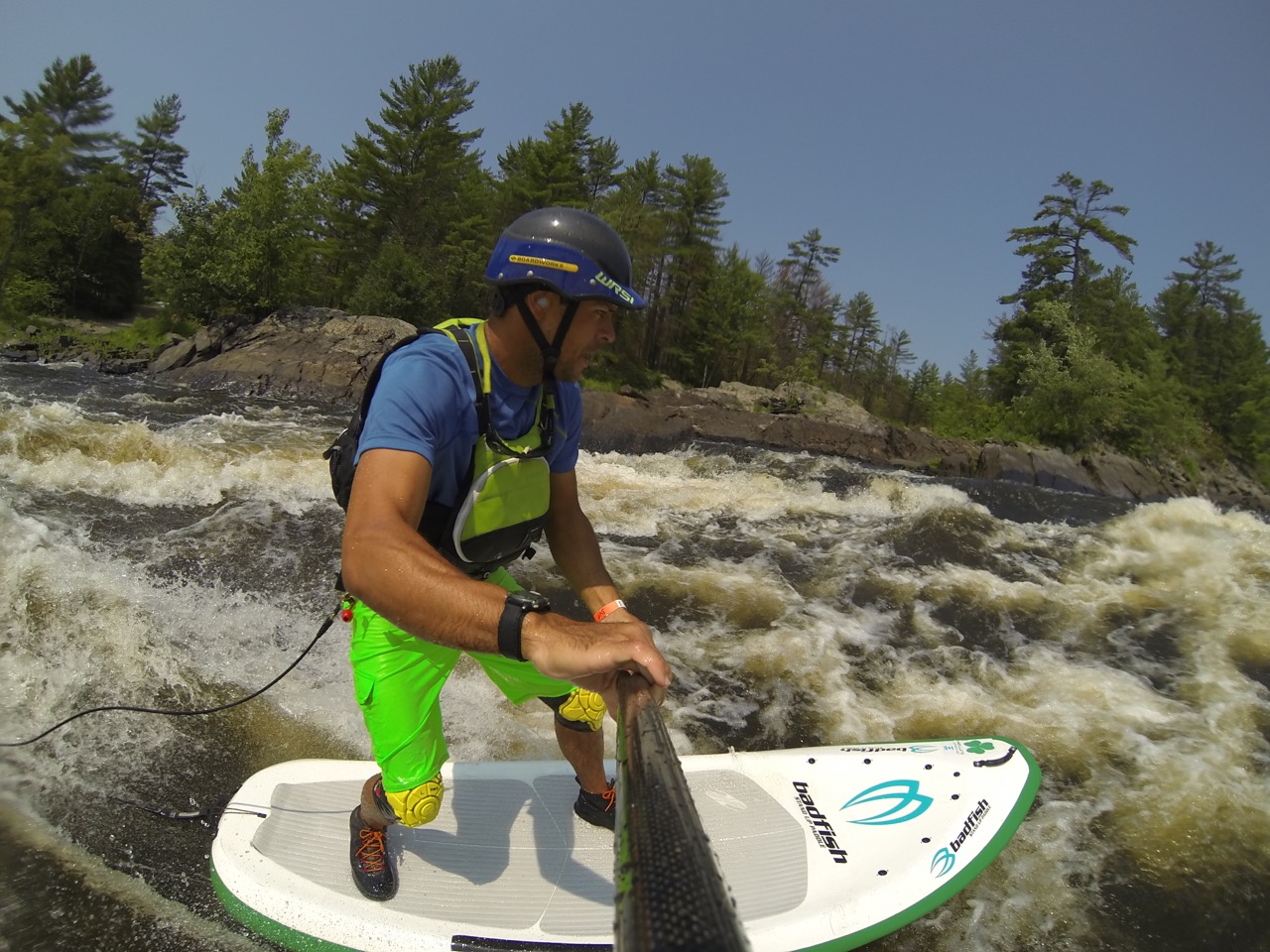River Running Tips from the man himself Mike T @RiverShred
1. Build your paddling skills background
Before even setting foot on the river, a good way to set yourself up for success is to make sure you are as solid as possible with all of your paddling strokes and concepts. Everything happens faster and quicker when you are on a moving river, so having down the all the strokes and maneuvers is key. Here is a few key things to practice before setting foot on the river.
Strokes – Forward, Forward Sweep, Reverse, Reverse Sweep, side draw, nose/bow draw, stern draw, as well as compounding all of those strokes together. One stroke that is particularly useful in the river is the nose/bow draw compounded with a forward stroke.
Pivot Turns - Pivot turns or quick turns are very important on the river. Making fast maneuvers in the river is a must and practicing this both ways on your heel and toe side is a must.
Bracing – Low and High braces are insanely helpful for not falling and stabilizing on the river. In particular, the low brace is key to keep you stable and protect your shoulders on the water, especially while surfing.
Proper falling and recovery - Falling on the river without hitting rocks and protecting yourself takes practice, as well as a fast recovery back to your board and gear. Make sure you practice falling flat, or onto your board, as well as being very aggressive while recovering yourself and gear back to the board or to shore.
This is a great start to skills on the river, but is always a work in progress, even for the top athletes out there. Never stop building on your strokes and concepts.
2. Pick the Right Equipment
This is a fairly obvious one for any type of watersport out there, but in the river, it is particularly important. Picking boards and gear designed for the River and for Whitewater will have a huge impact on your outcome no matter what skill level you have. There are a few brands out there making specific whitewater boards and gear and the benefits are huge. I paddle Badfish Sup boards on the river because they are designed by river paddlers for river paddlers. They have unique shapes, rocker profiles, thicknesses, and concepts that you can’t get from any old board. Try out a river specific design and it will blow your mind over a traditional SUP shape.
Boards I paddle: Badfish River Surfer, Badfish MVP 9, 10.6, 12.6, Badfish RiverShred 9.6
Picking the right equipment also means making sure that you have the correct gear. Typically I paddle with pads, Helmet, PFD, releasable leash, and proper river clothing when in whitewater.
3. Know the Dynamics of Rivers and Whitewater
Knowing how and what a river does is the key to good river paddling. Being able to dissect a river and knowing where and when to place your board and paddle strokes is the key to being a great river paddler. At every level of whitewater, there is always something new to learn, but make sure you know the basics of rivers before setting out. Learn the dynamics of flowing water, eddies, eddy lines, hydraulics, & waves is a good start and build on it with every session in the water. The key is really being able to read the water and studying how the dynamics of a river work. I am always constantly studying the water and watching all the movements going on around me when I am in whitewater and I always continue to learn. If you are new to whitewater, consider taking a class from an instructor. The American Canoe Association (ACA) has a great network of whitewater SUP instructors, or go with someone with a bit more experience than yourself.
4. Make Hard Moves on easy Whitewater !
This is my personal favorite and seems to really challenge me every time I get on the water. After getting a main or normal line down on a rapid, look for different ways to run it over and over again. Pick a hard eddy to catch, a wave to catch halfway down, or run it switch. This will force you to challenge yourself and will drastically improve your ability to read and run whitewater. It also sets you up for better success when running a harder class of rapids. If you can nail a class III move in Class II whitewater, chances are next time you get to the top of a Class III rapid, you will have more skills, confidence, and will be ready for the challenge.
5. Diversify your river paddling
Try and be a diverse as possible when paddling on the river. Challenge yourself to not only run rapids, but surf every wave out there, and splat every rock.
Surfing is my favorite part of river paddling and will drastically improve your skill set on the river. It encompasses all the strokes, concepts, and skills that you need while paddling downstream. A lesser talked about bonus is that it improves your whitewater swimming and recovery skills to the max. Every time you fall while surfing you end up swimming downstream a good bit, which is amazing practice and a good strength builder. Whitewater swimming is harder than a lot of people think and surfing river waves is a great way to get really accustomed to it as well as get over any fears that you might have.
Until next time, see you on the river!
Mike T



